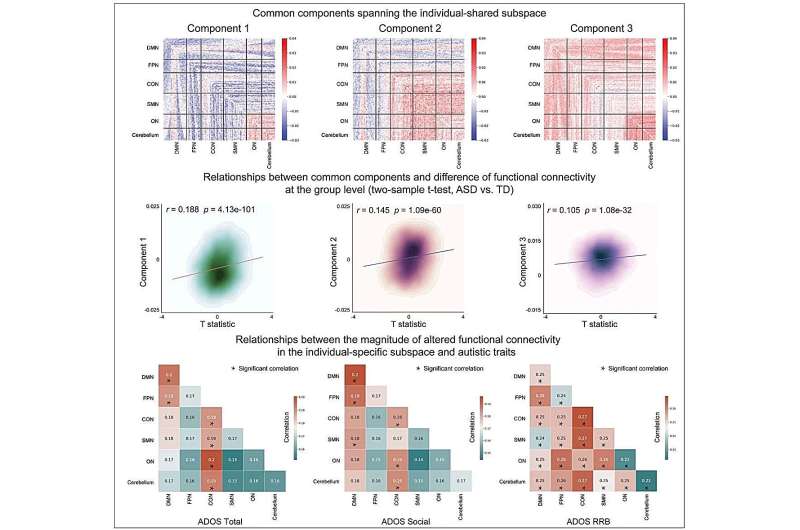This article has been reviewed according to Science X's editorial process and policies. Editors have highlighted the following attributes while ensuring the content's credibility:
fact-checked
peer-reviewed publication
trusted source
proofread
Researchers identify altered functional brain connectivity in autism subtypes

What happens in the brain to cause many neurodevelopmental disorders, including autism spectrum disorder (ASD), remains a mystery. A major limitation for researchers is the lack of biomarkers, or objective biological outputs, for these disorders and, in the case of ASD, for specific subtypes of the disease.
Now, a new study(opens in new tab/window) uses brain imaging and machine learning to identify altered functional brain connectivity (FC) in people with ASD—importantly, taking into consideration differences between individuals. The study appears in Biological Psychiatry.
John Krystal, MD, Editor of Biological Psychiatry, said of the work, "ASD has long been known to be a highly heterogeneous condition. While genetic studies have provided some clues to different causes of the disorder in different groups of ASD patients, it has been challenging to separate subtypes of ASD using other types of biomarkers, such as brain imaging."
Brain imaging scans are also extremely heterogeneous, varying greatly from one individual to another, making such data difficult to use as a biomarker. Previous studies have identified both increased and decreased FC in people with ASD compared to healthy controls, but because those studies focused on groups of participants, they failed to appreciate heterogeneous autism-related atypical FC. In the new study, the researchers showed that heterogeneous brain imaging subtypes could be distinguished among participants with ASD.
Xujun Duan, Ph.D., senior author of the work at the University of Electronic Science and Technology of China, explained, "In this study, we used a technique to project altered FC of autism onto two subspaces: an individual-shared subspace, which represents altered connectivity pattern shared across autism, and an individual-specific subspace, which represents the remaining individual characteristics after eliminating the individual-shared altered connectivity patterns."
The investigators found that the individual-shared subspace-altered FC of autism reflects differences at the group level, while individual-specific subspace-altered FC represents individual variation in autistic traits. These findings suggest a requirement to move beyond group effects and to capture and capitalize on individual-specific brain features for dissecting clinical heterogeneity.
Dr. Krystal added, "Part of the challenge to finding subtypes of ASD has been the enormous complexity of neuroimaging data. This study uses a sophisticated computational approach to identify aspects of brain circuit alterations that are common to ASD and others that are associated with particular ASD traits. This type of strategy may help to more effectively guide the development of personalized treatments for ASD, i.e., treatments that meet the specific needs of particular patients."
More information: Xiaolong Shan et al, Disentangling the Individual-Shared and Individual-Specific Subspace of Altered Brain Functional Connectivity in Autism Spectrum Disorder, Biological Psychiatry (2023). DOI: 10.1016/j.biopsych.2023.09.012



















